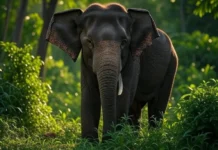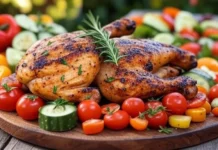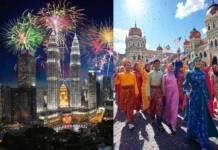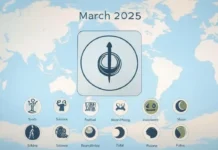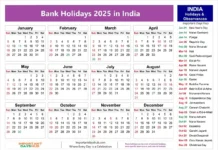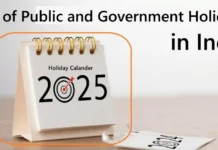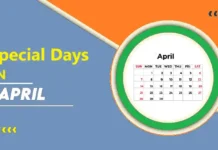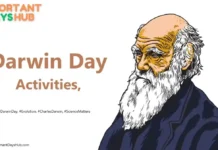Asia’s biggest mela is one of the most extraordinary cultural events that bring people together for a massive celebration of tradition, commerce, and community spirit. In countries like India, Pakistan, and other parts of South Asia, these grand fairs are much more than just gatherings—they are a fusion of spiritual rituals, livestock trading, local crafts, and folk performances. One of the most renowned and largest of these fairs is the Sonepur Mela, also known as the Harihar Kshetra Mela, which holds the title of Asia’s largest cattle fair.
Held annually in the town of Sonepur in Bihar, India, Asia’s biggest mela attracts millions of visitors from all over the world. It is a massive cultural celebration that blends ancient traditions with contemporary festivities, drawing both pilgrims and tourists alike. This article explores what makes Asia’s biggest mela an unforgettable experience, including its roots in commerce, spirituality, and the vibrant cultural performances that make it a must-see event.
Key Details of Asia’s Biggest Mela
| Event Name | Location | Significance | Key Highlights |
|---|---|---|---|
| Sonepur Mela | Sonepur, Bihar, India | Asia’s largest cattle fair and cultural festival | Cattle trading, traditional folk performances, local crafts, elephant rides |
| Date | November to December | Annual event, lasting 15-30 days | A mix of spiritual rituals, cultural performances, and trading activities |
| Visitors | Millions | Draws pilgrims, traders, and tourists worldwide | Engaging cultural activities and spiritual ceremonies |
| Cultural Events | Various | Folk dances, music performances, puppet shows | Regional performances, crafts, and traditional activities |
| Livestock Trade | Sonepur, Bihar | Significant cattle, elephant, and camel trade | Livestock exhibitions, animal sales, and rural marketplace |
Key Mela Events Across Asia
| Event Name | Location | Significance | Major Activities |
|---|---|---|---|
| Kumbh Mela | Allahabad (Prayagraj), India | World’s largest spiritual gathering, held every 12 years. | Ritual bathing, spiritual talks, and cultural performances. |
| Pushkar Mela | Pushkar, India | Famous camel fair combined with religious ceremonies and cultural shows. | Camel races, folk dances, local crafts, and prayers. |
| Baisakhi Mela | Various locations, India | Celebrates the harvest season and the birth of the Khalsa. | Prayers, traditional dances, and cultural music. |
| Loi Krathong | Thailand | Festival of lights honoring the Goddess of Water. | Lantern floating, traditional Thai dances, and local food. |
| Sindhu Darshan Mela | Leh, India | Honors the Sindhu (Indus) River with cultural performances. | River ceremonies, pilgrimages, and cultural performances. |
| Diwali Mela | Various locations across Asia | Celebrates the Hindu festival of lights. | Light displays, fireworks, cultural performances. |
The Sonepur Mela, also known as the Harihar Kshetra Mela, holds the title of Asia’s largest cattle fair. Situated in the town of Sonepur, Bihar, India, this grand fair is a celebration of tradition, culture, and livestock trade. Held annually at the confluence of the Ganges and Gandak Rivers, the Sonepur Mela draws millions of visitors from around the world. The fair is a blend of spirituality, market trading, and traditional performances, making it a unique and must-visit event for anyone interested in experiencing Indian rural life.
From its roots as a cattle trading hub to its modern-day form as a vibrant cultural event, the Sonepur Mela is a truly extraordinary experience. It’s not only a celebration of cattle but also a showcase of local traditions, handicrafts, food, and performing arts.
About Asia’s Biggest Mela
Asia’s biggest mela refers to large-scale fairs or festivals held across the continent, often rooted in religious, cultural, or agricultural traditions. These melas are characterized by their massive scale, vibrant atmosphere, and diverse activities. Some of the most famous examples include:
- Kumbh Mela (India): A Hindu pilgrimage and festival that rotates between four sacred locations and is considered the largest peaceful gathering in the world.
- Pushkar Camel Fair (India): A unique blend of cultural festivities and livestock trading, held in the town of Pushkar, Rajasthan.
- Sonepur Mela (India): Known as the largest cattle fair in Asia, held in Bihar.
- Bishwa Ijtema (Bangladesh): An annual Islamic gathering focused on prayer and spiritual reflection.
These melas are not only significant for their cultural and religious importance but also for their ability to bring people together from all walks of life.
Why Asia’s Biggest Mela is a Must-Visit
1. A Cultural Extravaganza
Asia’s biggest mela is a treasure trove of cultural experiences. Visitors can witness traditional dance performances, folk music, and theatrical shows that showcase the region’s rich heritage. Artisans from across the country gather to display their skills, offering handmade goods like pottery, textiles, jewelry, and paintings.
2. Religious and Spiritual Significance
Many of these melas, such as the Kumbh Mela, hold deep religious importance. Pilgrims gather to take part in sacred rituals, bathe in holy rivers, and seek blessings from spiritual leaders. The spiritual energy and devotion during these events are truly awe-inspiring.
3. A Culinary Adventure
Food lovers are in for a treat! The mela features a wide array of traditional and street foods. From spicy chaat and sweet jalebis to regional delicacies like momos, biryani, and lassi, the flavors are as diverse as the attendees.
4. Shopping Paradise
The mela is a shopper’s paradise, offering everything from handmade jewelry and clothing to pottery and souvenirs. It’s the perfect place to pick up unique gifts and support local artisans.
5. Entertainment for All Ages
With amusement rides, games, and live performances, the mela is a family-friendly event. Kids and adults alike can enjoy the festive atmosphere and create lasting memories.
Historical and Cultural Significance
Asia’s biggest melas have a rich history that dates back centuries. For example:
- Kumbh Mela: Rooted in Hindu mythology, it is believed that during the Kumbh Mela, the waters of sacred rivers like the Ganges turn into nectar, granting salvation to those who bathe in them.
- Pushkar Camel Fair: Originating as a livestock trading event, it has evolved into a cultural extravaganza that attracts tourists from around the world.
- Sonepur Mela: Known as the largest cattle fair in Asia, it has historical ties to the Maurya and Gupta empires.
These melas are not just events; they are living traditions that have been passed down through generations.
How to Make the Most of Your Visit
1. Plan Ahead
- Check the dates and location of the mela in advance. Popular events like the Kumbh Mela attract massive crowds, so book accommodations early.
- Research the schedule of events to prioritize the activities you want to experience.
2. Dress Comfortably
- Wear lightweight, breathable clothing and comfortable footwear, as you’ll be walking a lot.
- If attending a religious mela, dress modestly to respect local customs.
3. Stay Hydrated and Safe
- Carry a water bottle and stay hydrated, especially if visiting during warmer months.
- Be mindful of your belongings in crowded areas.
4. Respect Local Customs
- Be mindful of cultural and religious practices, and follow any guidelines provided by organizers.
- Ask for permission before taking photos of people or sacred sites.
Links
Asia’s biggest mela is more than just an event; it’s a celebration of life, culture, and unity. Whether you’re a first-time visitor or a seasoned attendee, the mela promises an unforgettable experience. Plan your visit today and immerse yourself in the magic of this grand celebration!


